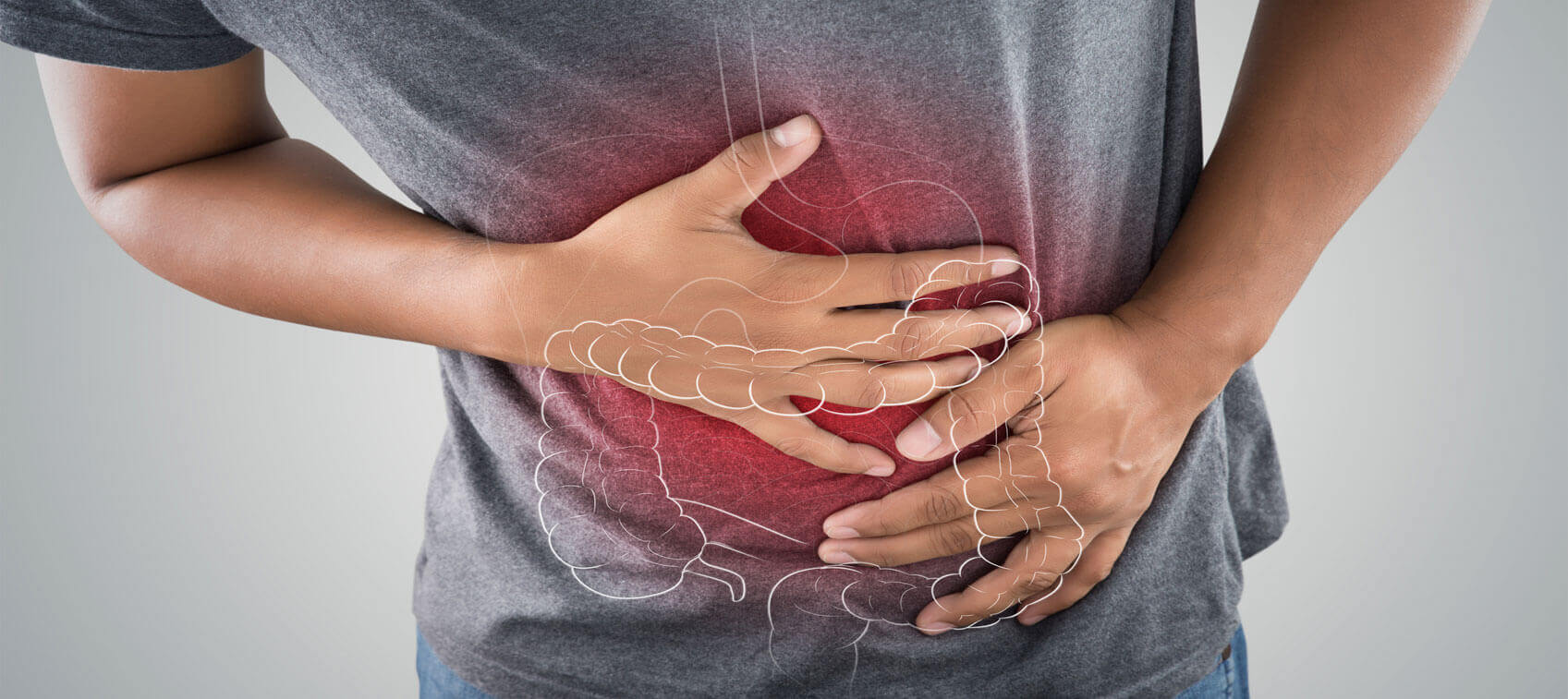
Irritable bowel syndrome (IBS) affects up to 45 million people in the US, with about 66 percent of them being women. It is estimated that 10–15 percent of the worldwide population suffers from IBS. If you have IBS, you know that all it usually takes is one bad food choice to literally turn your stomach into angry knots, complete with painful cramping, bloating, diarrhea, and/or constipation.
IBS can be tricky to treat, since not all solutions work for everyone. However, one thing is clear: Having a robust and healthy colonization of beneficial bacteria in the bowel is imperative. Here are my suggestions for establishing the optimal bowel environment so that you can combat IBS naturally.
Probiotics and Fermented Foods
The first step to treat IBS naturally is to add fermented food and/or a probiotic supplement to your daily regimen. Probiotics are live micro-organisms that, when administered in adequate amounts, neutralize toxic compounds. Research has shown that 50–75 percent of those who make this change will notice a significant difference in their IBS symptoms.
Naturally fermented, "live" foods have been around since the beginning of mankind. Fermented vegetables (sauerkraut) and milk products (clabber, yogurt, cheese, buttermilk, kefir), fermented soy products (natto, miso, tempeh, tofu), and even naturally fermented, unpasteurized beers are some of the most complete probiotics available, literally bursting with the beneficial bacteria that promote optimal bowel health.
If you can't add these foods into your diet, try Lactic Acid Yeast Wafers from Standard Process Laboratories. A couple of wafers with each meal will start to work wonders at re-establishing the beneficial bacteria in your bowel. The product is generally sold through doctors, so you’ll have to find a medical professional who carries it (chiropractors are a good source)—or you can search the Internet for suppliers.
When you don't have access to fermented foods, I recommend taking a probiotic supplement. Look for one that can maintain viability without refrigeration.
Treating IBS With Diet
When probiotics don't do the trick on their own, treating IBS with diet is the next step—specifically, upping your fiber intake. However, two important factors must be taken into consideration.
First, some types of fiber should be avoided. IBS sufferers are often sensitive or allergic to certain types of food, such as wheat and other grain products. As such, grains are generally not the best source of fiber in these cases. Instead, water-soluble fibers that promote the formation of protective gel and mucus in the bowel are best. This type of fiber is found in guar gum, psyllium or Indian husks, oat bran, flaxseeds, fruits, vegetables, and legumes (beans and peas).
Most of these fiber sources are either absorbents or binding agents, which means that they absorb or bind with water. This causes them to soften and swell, creating the extra bulk necessary to gently stimulate the cleansing movement in the colon. For the whole process to work, you must drink adequate amounts of water—a minimum of eight glasses a day.
The second factor to keep in mind when treating IBS with diet and increasing fiber, is that fiber-rich fruits and vegetables are best avoided during periods of diarrhea. They should be reintroduced gradually when the bowels normalize. The amounts and timing vary from person to person. The same holds true for guar gum or psyllium. It would be impossible to give the exact amount that works…you need to monitor bowel consistency and looseness and adjust the dosages accordingly.
What to Avoid
When treating IBS with diet, you may need to cut back or eliminate your intake of several types of foods, namely sugar and highly concentrated sugar-containing products like fruit juices, alcohol, and tomatoes and tomato products. Consumption of salt water fish and those from lakes contaminated from acid rain should also be minimized. This caution also applies to canned tuna, unless you know it’s low in mercury. Research has found that the mercury often contained in these fish is one of the main triggers for IBS symptoms.
Elimination Diets
While treating IBS with diet, you may need to go on a limited elimination-type diet for two weeks if your symptoms are severe. First, restrict your diet to chicken, lamb, potatoes, rice, and fruits. Then gradually add back other foods one at a time to determine which foods are contributing to the problem.
If you find that eliminating certain foods doesn’t help your symptoms, the next step, called “weed and feed,” is more involved. The idea is to first cleanse the bowels of any harmful or large numbers of undesirable bacteria, fungi, yeast, and parasites; heal any damage that has taken place; and then re-establish a healthy population of beneficial bacteria. Here’s how you do it:
Day 1
The program begins with a 24-hour fast, where ideally nothing is consumed except purified water. (Chlorinated water is not recommended because it is kills all bacteria, even beneficial strains.) If you can’t fast on water alone for 24 hours, a homemade vegetable broth or the low-sodium version of V8 juice can be included, but all other food and drink should be avoided.
Days 2 and 3
After the first 24 hours, steamed vegetables and light salads can be gradually added. (Yeast products, sugar, and starchy foods such as potatoes and rice are not allowed.) Days 2 and 3 begin the "weeding" of your colon as "broad spectrum" natural antimicrobials are added to the regimen. The standard antimicrobial is garlic, preferably fresh, which has been proven effective at eliminating an extremely wide variety of harmful bacteria, fungi, yeast, and viruses while at the same time sparing the beneficial forms of bacteria. You can achieve these effects by simply consuming two crushed garlic cloves twice daily with your meals.
Other natural antimicrobials can be used either in conjunction with garlic or by themselves during days 2 and 3. One is food-grade hydrogen peroxide, which can be taken three times a day as two drops of 3 percent hydrogen peroxide mixed with eight ounces of purified or distilled water. (You need to be very careful with hydrogen peroxide. The 35 percent strength is extremely caustic, and will cause serious burns to the skin, eyes, or mucous membranes. Stick with the 3 percent food-grade variety.)
Day 4 and Beyond
Beginning on day 4, and through the remaining two weeks, you need to heal any damage to the bowel and re-establish the growth and dominance of the beneficial bacteria. In addition to starting on a good probiotic, you can now gradually begin to introduce more and more fresh foods.
During this period, it is important to avoid sugar, alcohol, caffeine, wheat products, and high-starch foods such as bread, potatoes, and rice. Steamed or stir-fried vegetables are highly recommended—particularly high-sulfur foods such as cabbage, broccoli, bok choy, Brussels sprouts, cauliflower, cress, kale, mustard, radish, and turnip. Onions, asparagus, and artichokes are also good choices, and legumes may also be introduced. Keep in mind, too, that these last few items are higher in fiber—which will be beneficial for irritable bowel syndrome, but may need to be introduced later if diarrhea is an issue. The timing of when and how much can be eaten will vary from person to person.
Meat can be gradually added (begin with chicken, fish, or lamb), and it is generally easier and best to do so in the form of broths, stews, or soups. Slow-cooked (not instant) oatmeal is also a good addition at this point. Dairy products may also be included but start with the fermented ones first (such as yogurt). As you begin to reintroduce different foods into your diet, be alert to any changes in your symptoms. You may have to discontinue certain foods and add them back later when your bowels are in better shape.
Other Nutrients That Help IBS
In order to help heal damage to the mucosal lining of the bowels, I suggest trying the following supplements, herbs, and foods.
- Slippery elm powder is a favorite topical remedy of Native Americans for wounds, burns, and boils. It can also be used internally for ulcers and to soothe an irritated intestinal system. A slippery elm drink can be made by adding a heaping teaspoon of the powder to a little cold water to make a paste, and then pouring on a cup of boiling water while constantly stirring the mixture. Let it cool and then drink it, three times a day. For a slight variation, you can use boiling milk instead of water and flavor the mixture with cinnamon or nutmeg. If you opt for slippery elm capsules, take two (400 or 500 mg each) three or four times daily.
- Sialex from Ecological Formulas is an alternative to slippery elm. It contains an extract of mucin (the main component of mucus) that re-establishes the protective mucus layer in the bowel and provides lubricating action. You shouldn’t need Sialex if you use slippery elm, but it is helpful in healing the most stubborn cases of IBS, particularly where ulcerations in the stomach and small intestine occur. The recommended dosage is 1 to 3 capsules with meals.
- Peppermint is also beneficial. It works as a disinfectant, cleansing improperly digested foods, and it relaxes digestive tract muscles, easing the colon spasms associated with IBS. Specifically, research has shown that enteric-coated peppermint/caraway oil preparations can relax the smooth muscle in the colon and relieve IBS spasms. Enteric coating is a slow-dissolving covering that keeps the oils from being released in the stomach. To be effective, the oils must reach the colon. If released in the stomach, the oils may cause heartburn and acid reflux. Enzymatic Therapy sells a good product called Peppermint Plus, which is easily found online and at many health food stores. Rarely, some individuals using peppermint oil products experience a temporary burning sensation in the rectal area upon defecation. If this occurs, simply reduce the dosage. The menthol in the peppermint oil causes the burning sensation.
- Manuka honey can help too, according to a study where researchers induced IBS and ulcerative colitis in rats, then fed them some of them the honey. At examination, the rats that received the honey showed greatly reduced levels of inflammation in the bowel and improved values for cell changes and antioxidant levels. The dose used in the study was 5 grams per kilogram of body weight daily. For a 100-pound person, this would work out to about half a pound of manuka honey a day—obviously a huge (and costly) amount for a person to be consuming regularly. So start with a teaspoon a day and increase the amount if needed.


